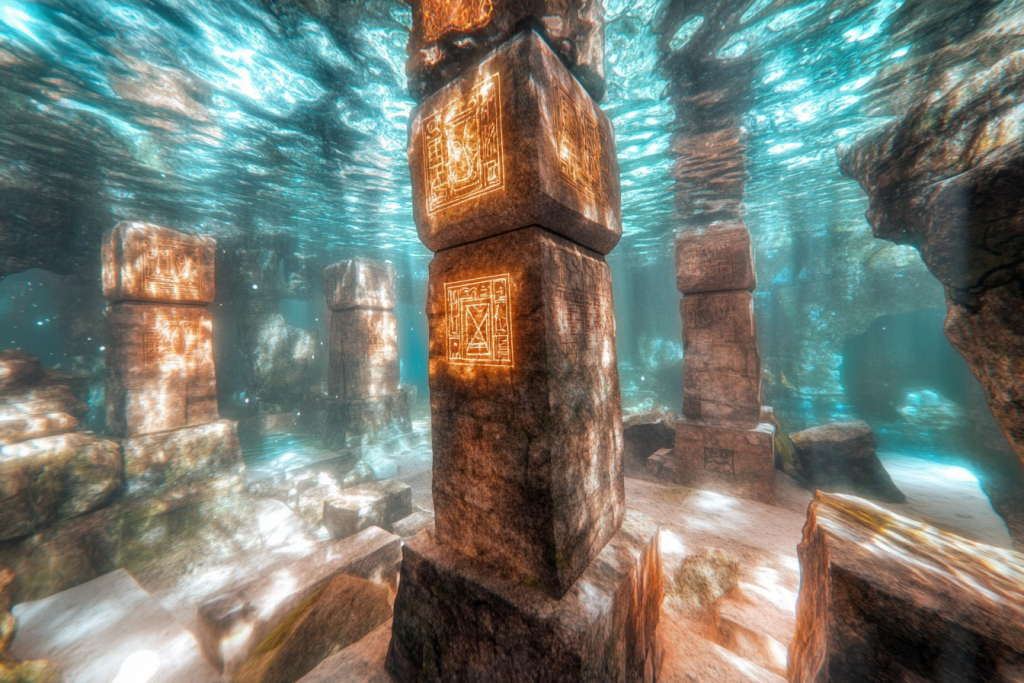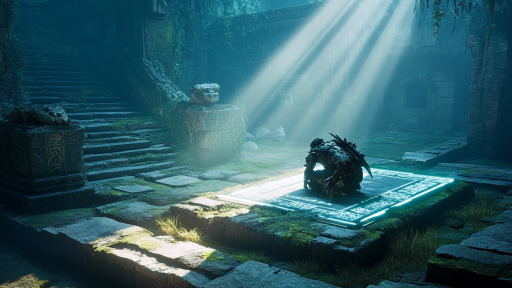
Long before modern machinery and digital blueprints, ancient civilizations crafted architectural marvels that continue to defy logic. With precision, scale, and ingenuity that seem far ahead of their time, these structures raise more questions than answers. How did they lift stones weighing hundreds of tons, align their monuments with the stars, or carve with such microscopic accuracy? These feats suggest lost knowledge—or perhaps something even more mysterious.
The Great Pyramid of Giza

Towering over the Egyptian desert, the Great Pyramid remains one of the most mind-boggling achievements in human history. Built with millions of limestone blocks, some weighing as much as 80 tons, its alignment to true north is eerily precise. Scholars still debate how such massive stones were quarried, transported, and stacked with a precision unmatched even by today’s standards. Was it purely human effort—or knowledge now forgotten?
Sacsayhuamán, Peru

This ancient fortress near Cusco is constructed from enormous stone blocks, meticulously cut and fitted together without mortar. The joints are so precise that not even a piece of paper can fit between the stones, many of which weigh more than 100 tons. The fact that these stones were quarried, transported uphill, and positioned with such accuracy remains unexplained. Earthquakes have come and gone, yet the walls stand immovable.
The Coral Castle, Florida

Though more recent, Coral Castle baffles engineers just the same. Built in the early 20th century by one man—Edward Leedskalnin—who claimed to understand the secrets of ancient construction. He moved and carved coral blocks weighing several tons using unknown techniques, and never allowed anyone to witness his work. How he managed such feats alone remains a mystery to this day.
The Kailasa Temple, India

Carved downward from a single piece of solid basalt rock, the Kailasa Temple in Ellora is one of the largest monolithic structures ever created. No scaffolding was used, and the precision with which it was chiseled is staggering. The entire temple complex was supposedly completed in just 18 years—an impossible feat, even with today’s tools. Its creation defies both time and technology.
Baalbek’s Trilithon Stones, Lebanon

The ancient site of Baalbek contains three stones, each weighing more than 800 tons—some of the largest building blocks ever used. The purpose and method behind their placement remain hotly debated. Modern cranes would struggle to lift these giants, yet ancient builders managed to set them perfectly in place. Were they moved by human hands—or something more advanced?
Nan Madol, Micronesia

This lost city built atop a coral reef features giant basalt columns stacked like logs into mysterious ocean structures. With no known way to transport the stone across open water, let alone lift it into place, Nan Madol challenges everything we understand about early engineering. The city appears to float on the water, earning it the nickname “the Venice of the Pacific.” Its true origins remain hidden in the tides.
Pumapunku, Bolivia

Pumapunku is a high-altitude archaeological site featuring precisely cut stone blocks, some with drill holes and interlocking shapes. The level of geometric accuracy resembles machine-cut engineering, yet the site predates the Inca Empire. Some of the stones weigh more than 100 tons, and no tools capable of such work have ever been found. The craftsmanship defies the known capabilities of ancient civilizations.
Gobekli Tepe, Turkey

Predating Stonehenge by thousands of years, Gobekli Tepe consists of massive T-shaped pillars carved with animal figures and arranged in circular formations. The site challenges the notion that early humans were only simple hunter-gatherers. These megaliths suggest advanced planning, cooperation, and construction knowledge at a time when civilization was supposedly just beginning. It’s as if a forgotten era of innovation left behind a stone calling card.
The Osirion at Abydos, Egypt

Hidden behind the more famous Temple of Seti I lies the Osirion—an enigmatic structure made of enormous granite blocks, many weighing over 60 tons. Unlike surrounding temples, its construction style appears much older, with precise stonework that some believe predates dynastic Egypt entirely. The water-filled chamber and unusual architectural features have led to theories involving lost civilizations or advanced ancient technology. It stands as a silent anomaly in the heart of Egypt’s sacred landscape.
Beyond the Blueprints of Time

These ancient structures aren’t just marvels of architecture—they’re mysteries carved in stone. They defy the timelines, technologies, and understanding we’ve come to accept, hinting at lost knowledge or a radically different view of history. Perhaps these feats weren’t impossible for those who built them—but they remain so for us. Until we solve these riddles, the past may always be one step ahead of the present.





